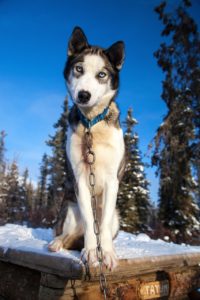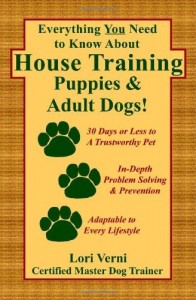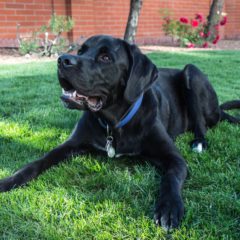When the weather starts getting cold, I often start receiving calls and emails from folks wanting to know how to get their “outside dog” to behave inside. Some people say that they had been doing their dog a favor by letting him stay outside to enjoy the fresh air, and others simply feel that dogs belong outside in general. Either way, the biting temperatures of winter weather usually gets lots of pet owners rethinking their dog’s environment. And that’s good.
Domesticated dogs such as those we keep as pets have been bred for many years to interact with humans. Social animals, they need interaction with others in order to exist happily and be properly socialized. Of course, there are some dogs who enjoy their time spent outdoors more than others, but it is safe to say that pretty much all dogs prefer to sleep inside where it’s warm and safe, in the comforting surroundings of their home and humans.
Aside from the guilt that many people experience when their dog spends the majority of their time outdoors in the freezing cold, there is another problem… outside dogs often don’t know how to behave inside! Common issues include the fact that many dogs are so excited to be inside that they act wild and crazy around the house. For example, they may not know that they are not supposed to chew a remote control just like any other “stick,” and since they never have to “hold it in” when they’re outside, they may have housebreaking accidents at first. Unfortunately, this sometimes leads to the dog ending up right back outside again due to his poor indoor behavior.
However, with a little effort, most dogs come around quite nicely. By working with your dog on a few basic commands, such as “sit,” “down,” and “stay,” and teaching him the meanings of the words “no” and “good dog,” even a dog who has lived outside for years can learn the rules of the home very quickly.
Remember that you can use your dog’s leash, even indoors, to maintain some level of control. Whenever he does something wrong, tell him “no,” and when he does something right, praise lavishly, “good boy.” Former outside dogs in particular, respond very well to obedience training because they are happy to get your undivided attention.
Another training tip… don’t go from one extreme to another. In other words, don’t go from having your dog live outdoors to having complete free run of the house. Use some household gates to limit his access to other parts of the house and bring him into each area under your supervision only. Have your pet sleep in a properly sized dog crate rather than having run of the living room, etc. A little supervision and common sense can go a long way toward protecting your home’s contents and teaching your dog right from wrong.
Most people are pleasantly surprised how quickly their dog adapts to the rules of the home. And quite frequently, the old-fashioned belief that dogs belong outside are replaced with new old-fashioned scenes of dog and human sitting quietly together in front of a warm, crackling fireplace.
For detailed help with teaching your outside dog not to have accidents in the house, check out my book, “Everything You Need to Know About House Training Puppies and Adult Dogs.”










2 Responses
New Year's Resolutions For Dog Lovers! - Lori Verni-Fogarsi (LoriTheAuthor)
[…] If your dog lives outdoors, bring him inside the house or at least the garage so you can interact and he can be warm and healthy. Pay attention to him at least 40 minutes per day. (Note: I do not agree with dogs living entirely outdoors, but realize that some people need this tip anyway. Please check out this article on “How to Bring Outside Dogs In.”) […]
Dog Days of Winter - Lori Verni-Fogarsi (LoriTheAuthor)
[…] dog independently or with a qualified dog trainer, with a little work on your part, you too can enjoy your pet indoors as a part of the […]